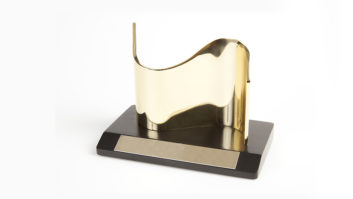
The Chandler Limited LTD-1 is so close to the original 1073 Nevemodule that it’s almost scary. With its expanded equalizer choices andfront-panel DI jack, the LTD-1 is a faithful upgrade of the 1073 fromthe swinging ’60s and not someone’s idea of what a “newand improved” version of the famed Neve channel should soundlike. The LTD-1 sounds and performs exactly like an original orperfectly restored 1073 Neve module.
Like all of Chandler’s line, the LTD-1 is hand-built in the U.S. tonear-military specs, using the same layout and wiring paths of theoriginal Neve channel strips. The cabinet is a nickel-plated steelframe. All pots, transformers and circuit board edge connectors mountto an internal subframe assembly. The unit uses exact replicas ofNeve’s five original PC boards, even with the same part numbers. Alltransformers and inductors are the English St. Ives that are used inthe original modules, along with Neve-specified BC Series transistorsand blue Phillips caps.
ENHANCED FEATURES
The EQ design is borrowed from consoles that the BBC custom-orderedfrom Neve, Calrec and Audix, and the unit’s nine aluminum knobs havebaby-blue centers similar to those used on Neve broadcast modules. TheLTD-1 has eight additional frequency choices over the 1073’s 11 and iseasier to use, as the controls are spread out over the fullsingle-rackspace front panel; no need for those space-saving, butfiddly, concentric pots.
The HF shelving equalizer has 16, 12, 6.8, 4.7 and 3.3kHz positions,while the original 1073 has 12kHz shelf only. The mid section overlapsthe HF and betters the 1073 by four choices. The choices are 270, 390,560, 820 Hz, 1.2k, 1.8k, 2.7k, 3.9k, 5.6k and 8.2 kHz. The LF EQ andhighpass filters are the same as the original: 220, 110, 60 and 35Hz EQpoints and 300, 160, 80 and 50Hz, -18dB/octave filter positions. Thereis 16 dB of boost/cut available for each of the equalizer sections, butunlike the 1073, the LTD-1’s boost/cut settings (in 2dB increments) aresilk-screened on the front panel. I would prefer a detented center 0dBposition that was straight up at the “noon” position ratherthan pointing downward at “6 p.m.”
The 100k-ohm-impedance, ¼-inch direct input uses a lockingNeutrik connector on the front panel and a switch to toggle between itand the rear balanced-mic input XLR connector. Other switches include48-volt phantom, EQ in/out and a Reverse switch. All four switches aremounted sideways, with Neve-style, vintage-looking buttons. I’d like tosee all of these buttons backlit when in use, along with a powerlight/switch.
The 22-position mic/line input-sensitivity switch selects, in 5dBsteps, gain for either the mic or line inputs. Again, just like the1073, line-level gain is adjustable between -20 dB and +10 dB, and micgain starts at 20 dB and goes to 80 dB. A separate Clarostat pot setsfinal output level.
IN SESSION
The LTD-1 is powered by the PSU-1 power supply, which will run up tofour Chandler products. For my bench A/B, I used a resistive microphonesplitter and connected the studio’s Neumann M149 to both the LTD-1 anda refurbished Neve 1073 module from Brent Averill Enterprises. Icompared both speaking and singing voices using only the mic pre withequalizers switched out. With both units set to equal gain, there wasno difference in level, sound quality or noise.
For the equalizer A/B, I switched both modules over to the lineinput set to the 0dB position. I mixed the output (L+R) of a CD playerand fed it to both modules. With EQ switches out on both units, thesound and level were identical. With the EQ switched in and with noboost or cut, I did notice a slightly lower output level from theChandler compared to this particular 1073 set the same way. I alsonoticed a slight decrease in low frequencies from the Chandler in thismode. Other than that, the sound and tone of the modules wereidentical.
I recorded vocals, bass guitar direct and snare (as part of a drumkit) using the LTD-1, and it performed exactly as the other pristine1073 modules I had on hand: loads of thick, Class-A tone. The DI workedexactly as the Averill unit had. Again, I can’t report that the LTD-1sounded “better,” except when I needed more EQ frequencies.The enhanced equalizer makes a big difference when recording certainproblem sources, like boxy-sounding snare drums. I normally patch anoutboard EQ for these problems, but this time, the LTD-1 came to therescue.
The LTD-1 is an extremely useful, versatile and worthwhile unit,providing that great Neve sound but with a lot more EQ options. Retailis $2,100; the outboard PSU-1 is $100.
Chandler Limited, 319/352-2587, www.chandlerlimited.com.
Barry Rudolph is an L.A.-based recording engineer. Visit hisWebsite atwww.barryrudolph.com.







